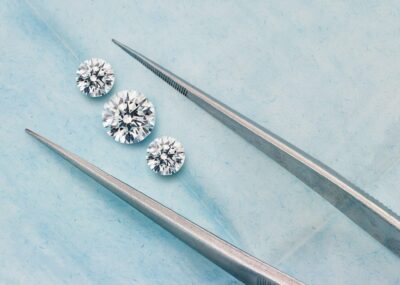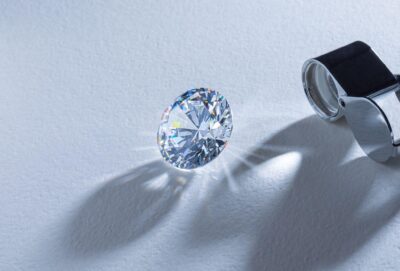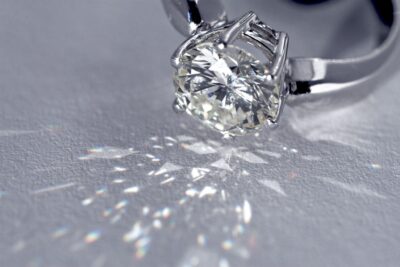Choosing the perfect diamond goes beyond cut and clarity. One of the most vital aspects to consider when selecting a diamond is color. This guide is tailored to provide insights on diamond color, helping both novices and enthusiasts understand its significance.
What’s the Best Color for a Diamond?

In essence, the “best” color for a diamond is a matter of preference. Some opt for a completely colorless diamond, while others appreciate a hint of color. However, when it comes to value and rarity, diamonds with less detectable color are considered more prized.
What Should I Know About the Diamond Color Scale?

Diamonds are graded on a color scale established by the Gemological Institute of America (GIA). This scale begins with the letter D (representing colorless) and ends with Z (indicating a light yellow or brown hue):
| D-F | Colorless | These diamonds have almost no color and are considered the rarest. |
| G-J | Near Colorless | These have subtle color, but it’s hard to detect with the untrained eye. |
| K-M | Faint | A slight color can be observed, usually a soft yellow. |
| N-R | Very Light | These diamonds have noticeable color. |
| S-Z | Light | A pronounced color is evident. |
What Is the GIA Diamond Color Chart?

The GIA Diamond Color Chart is a standardized system that professionals use to evaluate the color of diamonds. Diamonds are evaluated based on their absence of color, compared to a master set, under controlled lighting and viewing conditions. A diamond’s color is then assigned a grade, with D being the highest (colorless) and Z being the lowest (most color presence).
Fancy Colored Diamonds Color Scale

When it comes to fancy colored diamonds, the grading system varies from the traditional white diamonds. While white diamonds range from D to Z based on the presence of yellow or brown tints, fancy colored diamonds are graded according to the richness and depth of their hue.
The fancy color grading scale is as follows:
- Faint
- Very Light
- Light
- Fancy Light
- Fancy
- Fancy Intense
- Fancy Vivid, Fancy Deep, or Fancy Dark
Taking fancy yellow diamonds as an illustration: A diamond graded as “Faint” would exhibit a hue slightly yellower than a Z graded white diamond. Conversely, a Fancy Intense or Fancy Vivid yellow diamond boasts a radiant, almost golden shade.
Although Fancy Vivid, Fancy Deep, and Fancy Dark diamonds all fall under similar grading tiers, the brightness of their color varies. Fancy Vivid diamonds display a brighter hue compared to Fancy Dark or Fancy Deep diamonds.
In terms of demand and value, Fancy Vivid or Fancy Intense diamonds typically reign supreme, being the most desired and, therefore, the most costly. On the other hand, diamonds with Faint or Light grades are more abundant and generally more affordable.
What Color Grade Should I Choose When Buying a Diamond?

When buying a diamond, your decision may be influenced by several factors:
- Budget: Higher grade diamonds (D-F) are more expensive.
- Setting: The metal of your jewelry can influence the appearance of the diamond. For instance, yellow gold can complement diamonds with slight yellow tones.
- Size of the Diamond: Larger diamonds may display more color, so for bigger stones, you might consider a higher grade.
- Personal Preference: Some people enjoy the warmth of lower grade diamonds, while others seek the pristine quality of a colorless diamond.
Does It Matter What Diamond Color I Choose for an Engagement Ring?

Yes, the diamond’s color can affect the overall appearance of your engagement ring. For instance, consider diamond color in relation to the hue of the setting.
Platinum or White Gold Settings
These metals look stunning with higher grade diamonds (D-H) as they enhance the stone’s brilliance.
Yellow Gold or Rose Gold Settings
You could opt for a lower grade diamond (I-J or even K) as the metal will offset slight yellowish tones.
But again, personal preference plays a huge role. It’s vital to select a diamond that speaks to your individual taste.
FAQs
Q: Can I see the difference between a D and G graded diamond?
A: To the untrained eye, the difference is minimal. However, experts can discern the distinction under specific conditions.
Q: Does fluorescence impact diamond color?
A: Fluorescence can make a diamond appear whiter in UV light. However, in some cases, it can also give diamonds a slightly hazy appearance.
Our Bottom Line Diamond Color Recommendations

Selecting a diamond’s color should be a balance between budget, setting, and personal preference.
- For those seeking outstanding quality without concern for budget, opt for a D-F graded diamond.
- If you’re looking for a blend of value and appearance, G-J grades offer near-colorless beauty at a lesser cost.
- For yellow or rose gold settings, I-K diamonds provide excellent value while complementing the metal hue.
In the end, the right diamond color is the one that resonates most with your personal aesthetic and meets your specific requirements.
Considering Diamond Color When Selling Your Diamonds to Diamonds USA

Understanding diamond hues and color grading is a vital part of selling your diamonds. While color is a pivotal factor, remember that the overall value of a diamond involve a balance of its color, cut, clarity, and carat weight, along with market demand. Request your complimentary diamond appraisal kit from Diamonds USA to determine your diamond’s potential.
ABOUT DIAMONDS USA
Diamonds USA is a prominent online buyer of all diamonds, as well as gold, silver, platinum, and palladium, in the United States. Since 2005, we have paid millions to thousands of customers for their unwanted diamonds or broken precious metal jewelry. We offer a quick and straightforward selling process, ensuring customers receive prompt and competitive offers for their items. Learn more about us, or request your free Appraisal Kit now: